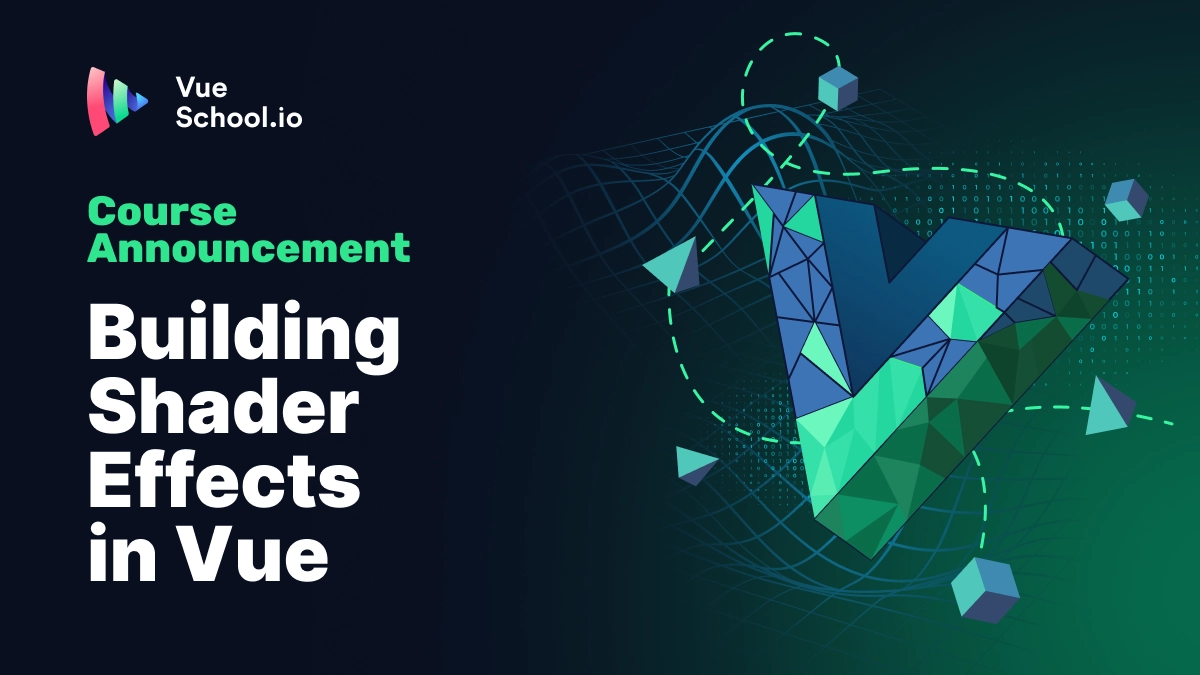Building Shader Effects in Vue

Picture this: you're building a modern web interface and want to create an interactive card that responds to user hover with smooth, rippling effects that follow the cursor. The kind of polished interaction where the effect feels fluid, responsive, and almost magical in its smoothness.
Your first instinct is probably to reach for CSS and JavaScript. But what happens when you actually try to build complex visual effects using traditional web technologies? You quickly hit performance ceilings. Multiple overlapping animations start to stutter, effects lag behind user interactions, and the overall experience feels janky—especially on lower-powered devices.
This is where shaders come in. Instead of managing dozens of animated DOM elements on the main thread, you can leverage the GPU to calculate visual effects across thousands of pixels simultaneously.
Oh no, we need to use math…
While your computer's main processor excels at complex, sequential tasks, GPUs are designed for one specific job: performing simple calculations on massive amounts of data in parallel. When you implement effects using shaders, you're writing a small program that runs once for every pixel on the screen using mathematical operations.
Here's what a simple gradient shader might look like:
#version 300 es
precision mediump float;
in vec2 uv; // UV coordinate from vertex shader
out vec4 outColor; // Final output color
void main() {
// Red increases left to right, green increases bottom to top
outColor = vec4(uv.x, uv.y, 0.0, 1.0);
}
This fragment shader runs once per pixel, using the pixel's position to determine its color. To be fair, this example could easily be done with a little CSS, but things start to get more complex when we start to animate things or produce more detailed effects.
What you'll learn
This advanced course focuses specifically on integrating WebGL shaders into Vue applications. You'll learn to build GPU-powered visual effects directly within Vue's component lifecycle, from setting up WebGL contexts to managing uniforms reactively.
Core Topics:
- Shader Fundamentals: Understanding vertex and fragment shaders and when to use the GPU
- Vue Integration: Building WebGL components that work seamlessly with Vue's lifecycle hooks
- Reactive Uniforms: Converting Vue props into shader-compatible data and handling time-based animations
- Texture Management: Using Vue's slot system to handle media assets as texture uniforms
- Real-World Application: Building a complete interactive hero section with mouse effects and animations
Who this course is for
Perfect for Vue developers who want to add high-performance visual effects to their applications. You should be comfortable with Vue 3's Composition API and basic JavaScript. No prior WebGL or shader experience required—we'll cover everything you need to know.
You'll also get a sneak peek at "Shaders"—a declarative component approach to building shader effects in frontend frameworks that itself pulls from some of the techniques covered in the course. Ssh, don’t tell anyone.
Whether you're building landing pages, hero sections, or immersive web experiences, this course will give you the tools to start exploring GPU-powered effects that feel smooth, responsive, and professional. Ready to unlock the GPU's power in your Vue applications?
Start learning Vue.js for free

Comments
Latest Vue School Articles
Just Released: Nuxt Hub Multi-Vendor and First-Class DB

Vue.js – 2025 In Review and a Peek into 2026

Our goal is to be the number one source of Vue.js knowledge for all skill levels. We offer the knowledge of our industry leaders through awesome video courses for a ridiculously low price.
More than 200.000 users have already joined us. You are welcome too!
© All rights reserved. Made with ❤️ by BitterBrains, Inc.



